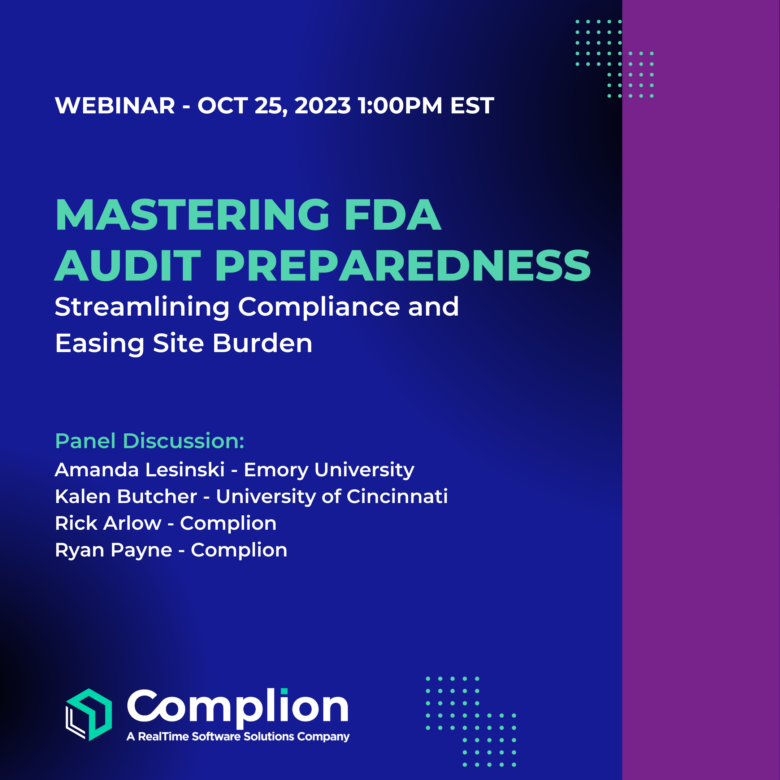 A lot of work is being invested to ensure site audit readiness, oversight, and completeness of regulatory files or binders.
A lot of work is being invested to ensure site audit readiness, oversight, and completeness of regulatory files or binders.
Unfortunately, there is a lack of understanding if everything is being done to the level of completeness, accuracy and quality that is required. As a result, site regulatory can be a real challenge for Sponsors and CROs.
Continued audits and inspection findings indicate that CRAs and Sites are missing site regulatory requirements. A lot of highly detailed work needs to be done to ensure audit-readiness — and to state it simply — CRAs just don’t have the time to do it correctly.
Furthermore, no one has a good way to even identify what hasn’t been caught or resolved.
Why are these issues so widespread?
So what’s the real problem? What’s really causing these ongoing issues with site audit-readiness, PI oversight and complete site regulatory files?
Let’s look at all the manual work that needs to happen to make sure the site regulatory file is complete, and that there’s audit readiness and oversight.
First and foremost, all of this work is dependent on the site. It’s about their regulatory requirements, their staff, their site, the labs they’re using, whether those labs are central or local, and whether there are different types of equipment that need to be managed. It’s about the amendments and also the approvals for things like subject documents. Additionally, each site may have slightly different requirements, perhaps the site is using different labs, different equipment, different staff members who obviously write different SOPs for what they are managing and ensuring the IRB correspondence that they’re doing are all there and showing the level of audit readiness and oversight.
The CRA needs to track all this, and in a majority of cases that’s being done very well. But often it is kept in a massive Excel spreadsheet, with separate worksheets for each individual site and numerous tabs to track the different aspects. This leaves up for question what information might be missing. What has expired? Is the document there and has it been updated? Is there a newer version?
Does the CRA have all the right information in this massive Excel sheet? Has the key information been collected correctly and in the right format? And, if any of this information is missed, the only way of really knowing what’ still needed is jumping back into the work and redoing it.
After going through all of the individual steps and doing duplicate manual work, there are still opportunities to miss something that an auditor or an inspector could find. And with the current environment with traditional visits being disrupted, many are questioning if this work is even happening today.
It’s important to note this is not a problem of the few. A majority of sites [approximately 80% to 90%] are still using physical paper binders to store their information.
The real root of the problem
But the site regulatory problem is not a document problem. Instead, it’s actually a regulatory workflow problem.
The workflows in the process stem around what information needs to be there and how that needs to be done to track the actual regulatory requirements with that site. It’s not just the massive list of documents and keeping that list separately in some staff member’s head or their spreadsheet.
What’s adding to the regulatory chaos? It relies on “individuals”:
- The work is open to interpretation and dependent on the staff’s expertise;
- SOPs can’t be enforced; and
- There is site burden with unclear expectations and arbitrary preferences.
Also, because of the level of detailed work, there’s still things that can get lost. More importantly, these individuals — the research staff — can be doing so much more with their time. They can be seeing more sites, focusing on more of the actual data-related issues. The sites can be focused on seeing more patients.
What’s needed is a workflow solution that understands the requirements and ensures everything is being done completely, to the highest level of quality and compliance, and is being done on time.
The road to improved workflows
There are two different paths to take. The first is a document tool that will help digitize the existing workflow process. However, this method will continue to place burden on the CRAs and the sites to track every detail to make sure it’s documented. Then, there is reliance on the staff’s skill level and interpretation. At the end of the day, this solution will just create a bad digital workflow process.
The other path — which actually solves a larger underlying problem — is a digital solution specifically designed for site regulatory study management. This solution helps define the processes and workflows and ensures consistency. It’s not just tracking the documents but instead, is tracking the requirements.
Purpose-built workflows ensure that this happens correctly and provides the highest level of oversight. Ultimately, but by doing this, there’s more clear insight at the end of the day into what’s new, what’s complete, the documents that are needed, as well what documents will ultimately go into the TMF.
Complion provides a regulatory study management workflow solution that offers consistency, quality and audit-readiness at every site and for every trial. Find out more about Complion’s software and how you can be on the path to resolving the site regulatory problem. Schedule a demo.


